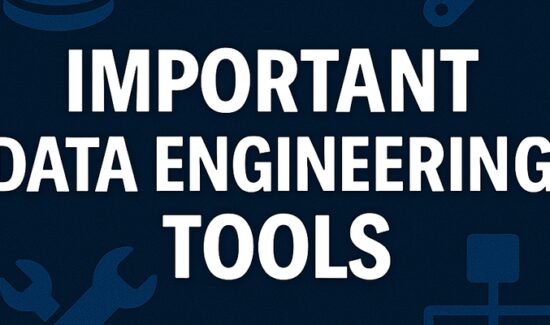The Holy Grail of Data Integration Is AI-Driven, Seamless & Secure


Adeptia’s Innovation Officer Deepak Singh offers commentary on how the holy grail of data integration is AI-driven, seamless, and secure. This article originally appeared in Insight Jam, an enterprise IT community that enables human conversation on AI.
The landscape of enterprise data integration has evolved dramatically over the past decade. What was once a purely technical challenge relegated to IT departments has become a strategic business imperative that can determine an organization’s ability to compete in the digital economy.
As companies slice through increasingly vast data domains, the utopia of perfect integration has been achieved: AI-based systems that seamlessly traverse heterogeneous landscapes and are secure by design. This convergence is the holy grail of today’s data integration – a vision being fast realized by technological progress.
McKinsey & Company’s global survey shows a significant increase in the use of AI, from 33 percent to 71 percent between 2023 and 2024. This indicates a growing trend of organizations leveraging AI across different functions, including data integration.
The Evolution of Enterprise Integration
Legacy integration techniques used scripting, fragile point-to-point mappings, and technical know-how. This had some unpleasant effects:
-
IT Bottlenecks: Integration requests would accumulate, with business initiatives taking months to come into effect
-
Scalability Limitations: Each new connection added made it that much more difficult to uphold
-
Flexibility Constraints: Redeploying for changing business requirements involved significant recoding and testing
-
Gaps in User Experience: Business users remained reliant on technical teams for access to the data, as well as connectivity
The onset of integration platforms partially bridged these issues using standardized connectors and visual design tools. Nevertheless, integrations that actually revolutionize today’s difficult, multi-cloud worlds with thousands of connections and terabytes of data depend on a wholly different approach.
AI-Driven Integration Revolution
Artificial intelligence is transforming data integration in many important ways:
Smart Mapping
One of the most time-consuming aspects of integration is data mapping between different systems and formats. New AI technologies can now analyze data patterns, field names, and content to suggest accurate mappings automatically—an activity that previously took days but now takes just minutes with AI.
When looking at integration platforms, choose systems that provide more than simple field matching by understanding data context and semantic relationships. Today’s cutting-edge solutions learn from human corrections consistently, continuously refining accuracy.
Automated Data Transformation
In addition to mapping, AI can now understand complicated data shapes and convert them to standard shapes automatically. This is particularly useful for outward-facing unstructured or semi-structured data that previously required a lot of effort.
The ideal solution offers more than just out-of-the-box capabilities of transformation, but more importantly, the opportunity to learn firm-specific patterns as well as rules. This creates benefits in real time and improves much better over time.
Smart Error Handling
Data quality issues and integration flaws have historically required manual intervention, which has resulted in delays and additional operational expense. Integration with AI can now detect patterns in exceptions, automate repetitive issues, and even anticipate problems before they impact business operations.
Enterprises should look for solutions that provide both reactive error correction and proactive anomaly detection, with sufficient visibility into automated resolution.
The Seamless Integration Experience
The second dimension of the integration holy grail is seamlessness—the ability to connect anything, anywhere, frictionlessly.
Business User Enablement
Modern integration solutions must enable business users to make connections without specialized technical expertise. This move from IT-focused to business-enabled integration shortens time-to-value and minimizes bottlenecks.
When assessing platforms, seek out easy-to-use interfaces built for business analysts, not developers, with template-based methodologies that remove technical complexity while offering governance.
Universal Connectivity
Today’s organizations operate on hybrid and multi-cloud infrastructures, and information exists in SaaS applications, on-premises environments, and across multiple cloud infrastructures. Integration must seamlessly span those gaps.
Confirm whether or not it is possible for solutions to support end-to-end connectivity amongst cloud services, old, legacy systems, and modern applications – without requiring heterogeneous tools or techniques for heterogeneous infrastructures.
Real-Time and Batch Processing
Different business use cases require different data movement patterns, from batch for analytics to real-time streaming for operation systems. Best-in-breed integration platforms within a single paradigm service both types.
Imagine if platforms could deliver variable volumes and velocities without having drastically different implementation approaches per use case! That is the dream for data integration.
Secure by Design
The final piece of the integration holy grail includes holistic security – this is critical as information increasingly flows across organizational boundaries.
End-to-End Protection
Modern data integration must safeguard data throughout its life cycle—at at rest, in transit, and in processing. This must be supplemented with encryption, access controls, and complete audit capabilities that do not degrade performance or usability.
Look for platforms that do security by design, not bolted on as an overlay, with features that align with your organization’s security policy.
Governance and Compliance
With regulatory compliance requirements evolving worldwide, integration solutions must include governance features that deliver compliance without compromising business responsiveness.
Evaluate platforms on the ability to enforce policy uniformly across all integration patterns, provide granular audit trails, and adapt to shifting requirements for compliance.
Secure Collaboration
Most integration use scenarios today extend beyond the organizational boundary to engage customers, suppliers, and partners. This requires reliable collaboration facilities that balance data interchange efficiency against safeguarding of confidential data.
Assess whether platforms can offer safe spaces of collaboration with adequate controls for external participants without degrading security or usability.
Selecting the Right Approach to Integration
When choosing next-generation integration platforms, employ these key criteria:
-
AI Maturity: Don’t trust marketing buzz to promise real AI capabilities – request demos on your data to test intelligence in the real world
-
User Experience: Ensure that the platform is truly usable by business users, not just “less technical” developers
-
Architectural Flexibility: Look for support for multiple deployment model scenarios (cloud, on-premises, hybrid) and integration strategies
-
Scalability Evidence: Request case studies that describe successful deployments at your estimated scale
-
Security Depth: Evaluate security features against your specific requirements and compliance requirements
-
Total Cost of Ownership: Consider implementation effort, maintenance needs, and business impact in addition to licensing costs
-
Ecosystem Health: Look at the vendor’s partner ecosystem, marketplace integrations, and community involvement
The Future of Integration
In the years to come, what is considered the grail of integration will continue evolving. We’ll have more automation via AI, more integration between emerging technologies like IoT and edge computing, and better security features deflecting new attacks.
But the vision remains the same: integration that’s smart enough to minimize technical complexity, smooth sufficient to integrate anything anywhere, and secure enough to protect your most sensitive information.
Those who adopt such next-generation integration capabilities to support business user enablement and effective governance will gain a strong competitive edge through improved agility, lower operational costs, and a greater ability to monetize their data assets.
Before setting out on your integration path, go beyond merely short-term technical requirements and embrace a broader vision of AI-driven, frictionless, and secure integration—this will transform data from a challenge to a strategic strength.



















